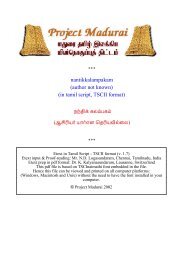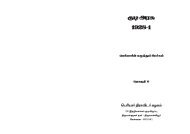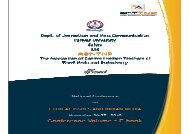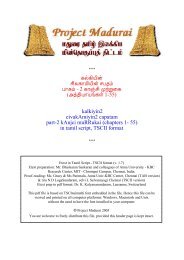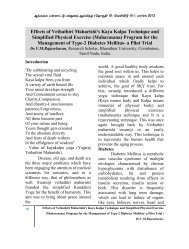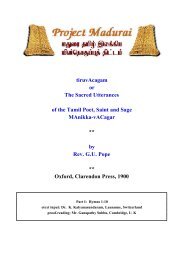THE FUNDAMENTAL RULES OF THE TAMIL NADU GOVERNMENT
THE FUNDAMENTAL RULES OF THE TAMIL NADU GOVERNMENT
THE FUNDAMENTAL RULES OF THE TAMIL NADU GOVERNMENT
- No tags were found...
Create successful ePaper yourself
Turn your PDF publications into a flip-book with our unique Google optimized e-Paper software.
(ii) a permanent or temporary post on the same time-scale as the unreduced time-scaleof the post, or(iii) a permanent post or a temporary post on a time-scale of pay identical with theunreduced time-scale of the post, such temporary post being on the same time-scale as apermanent post,then the initial pay shall not be less than the pay other than special pay, personal pay oremoluments classed as pay under Rule 9 (21) (a) (iii) which he would have drawn underRule 22 on the last such occasion if the unreduced time-scale of pay had been in force fromthe beginning and he shall count for increments the period during which he would have drawnthat pay on such last and any previous occasion.Explanation.—In cases where the period of absence is treated as “non-duty” under rule 18, theproviso to this rule shall not apply and the period of service prior to such “non-duty” shall not count forincrement.[G.O. Ms. No. 764, Personnel and Administrative Reforms (FR.III), dated 31 July 1985-with effectfrom 31st July 1985.]22-B. Nothwithstanding anything contained in these rules, where a Government servantholding a post in a substantive or officiating capacity, is promoted or appointed in asubstantive or officating capacity, to another post carrying duties and responsiblities ofgreater importance than those attaching to the post held by him, his initial pay in the timescaleof the higher post shall be fixed at the stage next above the pay notionally arrived at byincreasing his pay in respect of the lower post by one increment, at the stage at which suchpay has accrued. If the monetary benefit after such fixation falls short of five per cent of thepay drawn in the lower post, his pay in higher post shall be so fixed, allowing a minimumincrease of five per cent of the pay drawn in the lower post. Where the pay drawn in the lowerpost on the date of promotion or appointment plus five per cent of the pay drawn in the lowerpost is a stage in the time-scale of pay of the higher post, the pay shall be fixed at such stagein the time-scale of pay of the higher post. Where the pay drawn in the lower post on the dateof promotion or appointment plus five per cent of the pay drawn in the lower post exceeds theamount arrived at for fixation of pay in the higher post under this rule but where there is nocorresponding stage in the time-scale of pay of the higher post, the pay shall be fixed at thenext higher stage in the time-scale of pay of the higher post.[G.O. Ms. No. 778, Personnel and Administrative Reforms (FR.III), dated 8th August 1986-with effectfrom 1st October 1984.]Provided that no fixation of pay under this rule shall be made in the case of a Governmentservant, who has opted for fixation of pay under rule 22(1) (a) (i) or under rule 22(1) (b) (i) readwith rule 22(1)(a)(i), within 15 days from the date of receipt of the orders of promotion:Provided further that the provisions of rule 22(1)(b)(i) shall not be applicable to a casewhere the initial pay has been fixed under this rule F.R.22-B:Provided also that where a Government servant, who had not drawn stagnation allowance,before his promotion or appointment to a higher post, is drawing pay at the maximum of thetime-scale of pay applicable to the lower post, his initial pay in the time-scale of the higherpost shall be fixed at the stage next above the pay notionally arrived at by increasing his payin respect of the lower post by one increment above the maximum of the lower post equivalentto the amount of the last increment in that scale.[G.O.Ms. No. 975, Finance (FR.I), dated 10th July 1974.]Provided also that where a Government servant is promoted or appointed to a higher post,the maximum of the scale of pay up to which stagnation increment is admissible and wherethe pay plus notional increment in the lower post exceeds the maximum of the time-scale ofpay of the higher post, pay shall be fixed at a stage that is admissible under this rule and theother provisions thereunder, by increasing the maximum of the time scale of pay of the higherpost by stages equivalent to the amount of last increment:Provided also that where the pay so arrived at under this rule exceeds the maximum limitupto which stagnation increment is admissible, pay shall be fixed at the stage in the time-scale35





